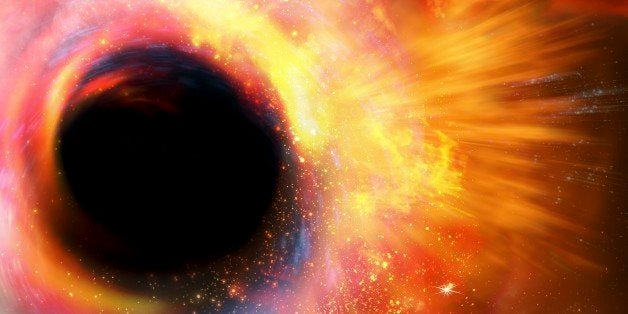
Could Earth really get so bad that we have to leave? That's the premise of Interstellar, the sci-fi epic of Homeric ambition and eonian length now filling the multiplexes.
Environmental decay is a familiar idea in space opera, although one that Interstellar has refreshingly turned around. In countless predecessors, from War of the Worlds to Oblivion, an alien planet goes haywire, driving the inhabitants to invade ours. Now it's Homo sapiens' turn to seek new turf.
As Interstellar opens, the problem is food and dust. Not enough of the first, and too much of the second. And while it's unclear what's generated all that particulate matter -- perhaps a strike by the International Housecleaners Union -- there's ample implication that uncontrolled climate change has turned our planet into a global reprise of the dust bowl. Growing food has become the career of choice -- indeed of necessity. STEM education is out, Future Farmers of America is in, and the only crop that can still be raised is corn. It's hard to ignore the fact that this is the very foodstuff abundantly available in the theater lobby, if you can afford it.
So our kids have somehow let the environmental rot reach the stage where no one can take it -- so they'll have to leave it. That's probably unrealistic, as it would require less time to fix what ails us than for Earth to become a planet-wide Black Hole of Calcutta. But there's little doubt that in the real world, life will eventually get tougher. There are only so many natural resources within easy reach on this planetary ball -- and I'm not talking oil; I'm talking harder things to replace, like copper, zinc, or platinum. In less than a century, many of these essentials will become so costly, burglars will break into your house, leave the big-screen TV alone, and rip the copper pipes out of the wall.
So while this film's premise is overdrawn, the idea that our descendants may feel compelled to fly the terrestrial coop isn't nuts. Nor is it the movie's greatest fictional leap. That honor belongs to the choice of destination.
There are a trillion planets in the Milky Way galaxy, and best estimates are that at least 10 billion of them (and maybe 100 billion) are vaguely similar to Earth. I'm all for choice when shopping, but isn't that good enough? Interstellar's protagonists obviously don't think so. They drop through a worm hole and are quickly transported to another part of the cosmos -- or maybe some other cosmos. I note that the black hole that creates this cosmic shortcut is conveniently situated near Saturn, which is only a few years' rocket-ride away. I also note that NASA's Cassini space probe, which has been hanging out in the Saturnian system for the last decade, has somehow failed to note this remarkable item. Then again, maybe the space agency isn't telling us because you'd riot in the streets if you knew.
Now whether or not a small black hole (and this has to be one, since it clearly fits within the solar system) allows this type of transport is hardly assured. But Kip Thorne, Caltech's wizard of worm holes, gets credit as one of the executive producers for Interstellar, so I won't quibble with the black hole mechanics. If he signs off, I sign off. And of course, the worm hole is essential, for otherwise our pioneers-in-quest-of-a-new-home would be relegated to rockets, and spend the rest of this film, as well as an additional 3 billion years, getting to even the nearest other galaxy. You'd be bored. They'd be dead.
But there are some obvious questions that bubble up in your brain as you watch this. If we're going to move, we obviously want a planet that's at least modestly similar to Earth-as-it-was. We'd insist on a few amenities, like oxygen in the atmosphere. But the oxygen that blankets our planet is the exhaust gas of the plant life here, and has been built up over billions of years. If we go to another planet that has a similar level of this gas, that means it also has a biota. It's got its own life, and even aside from whether or not humans should enforce eminent domain on someone else's world (isn't there a Prime Directive somewhere?), if that world has abundant plants, it probably also has animals. And maybe they'll fight back.
Just a thought.
But there's an easier solution to the whole problem. Going to another galaxy to solve difficulties at home is like jetting to a market in Katmandu when your fridge is empty. You don't have to go that far. Physicists Gerry O'Neill and Tom Heppenheimer worked out a more practical solution four decades ago: just build artificial habitats and put them into orbit around the Earth or Sun. No need to go interstellar (or more accurately, intergalactic). Interplanetary is more than good enough.
When Earth becomes too small and the problems too large, we can engineer some nearby supplemental living space. It's so easy, we could do it now, if someone felt it was worth the money. At some point in our future, it probably will be. This is not an abandonment of our planetary home: it's an escape valve to keep it from boiling over.
So while this idea gets a small nod in Interstellar, that film has too much scope to limit itself to the practical and probable. Going through worm holes isn't something we're about to do -- or may ever do. But nearby space, prosaic as it is, is definitely in our future.